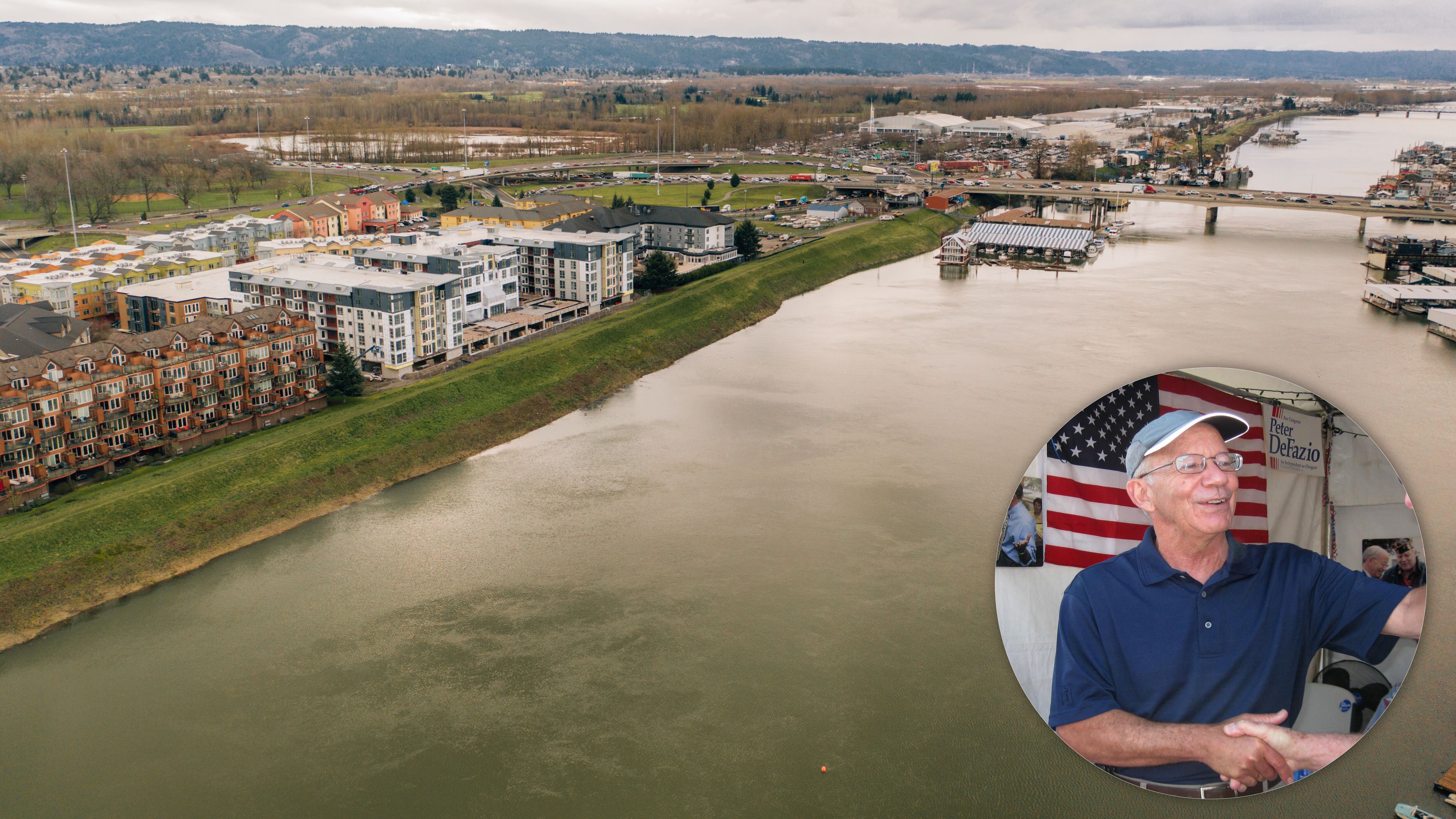U.S. Rep. Peter DeFazio (D-Ore.) fears Oregon and Washington won’t make it on time to a bridge across the Columbia River.
Nobody is better situated to know—or to help the Pacific Northwest secure Biden Bucks to rebuild the Interstate 5 Bridge. As chairman of the House Committee on Transportation, DeFazio is in a prime position to direct funds from President Joe Biden’s proposed $621 billion in transportation funding.
If Congress passes DeFazio’s preferred spending plan—and given the mandate Biden now has to jump-start the economy, it very well might—it would fund the rebuilding of the 10 most economically significant bridges in the nation. DeFazio estimates that the Interstate 5 Bridge across the Columbia River ranks 11th, but he thinks he could nudge it into the top 10.
Just one problem, DeFazio says: Washington and Oregon lawmakers don’t have a plan for such a bridge, nor do they appear to feel any urgency to make one.
In a conversation with WW, DeFazio warned that the states’ lethargic effort to draft plans for a bridge risks another missed opportunity—one that rivals Oregon burning through $175 million in a failed bid to build the Columbia River Crossing nearly a decade ago. It is the first time DeFazio has publicly voiced his alarm over the pace at which Oregon and Washington leaders are moving.
DeFazio, 73, has learned a few tricks in his 34 years on Capitol Hill. (In just over 30 minutes talking with the WW newsroom, he touched on Eugene electric-vehicle startup Arcimoto, Wall Street “flash boys,” and nuclear power.) But his hold on his seat has never been more tenuous: In 2020, DeFazio only narrowly defeated Republican challenger Alek Skarlatos and knows the addition of a sixth congressional seat in Oregon could mean the lines are redrawn in a way that he can’t secure a 19th term.
We asked him about that, too. The interview has been lightly edited for clarity and brevity.
WW: Are you hopeful the Columbia River bridge could make Secretary of Transportation Pete Buttigieg’s top 10 list, assuming the bill is passed?
Peter DeFazio: I would certainly argue that. If that bridge goes down, I think I-5 is the fifth-busiest truck route in the U.S., it connects the fifth-largest economy in the world to Canada, Washington and Mexico, and we’re at high risk of failure. I think they’re going to look at what bridges are most at risk, and given the potential of a Cascadia subduction zone earthquake, we’re at extraordinary risk of losing that bridge.
How do we make it on the list?
The administration wants projects that can happen, and they want things that are feasible within an eight-year window.
But the problem is, we don’t have a plan. I’m not sure that Oregon’s going to be ready. When I asked the governor, Kate Brown, when she was here about a month ago, where we were at, she just kind of was like, “Well, you know…” Washington state was supposed to put aside some money. They didn’t in their session. So I’m concerned about the rather slow pace that we’re going through.
You’re saying legislators in Salem and Olympia aren’t seizing the opportunity presented to them for a generational project. Is that a fair characterization?
I’m not sensing a sense of urgency. I raised concerns about the rescue package in January. I said, “Why don’t we put some money into real infrastructure, because I’m not sure I’m going to get my infrastructure bill done, and we’re giving the states too much money.” Oregon, we filled in their budget hole, and they’ve got an extra $1.3 billion. Washington state has probably got an extra $2 or $3 billion, and if there was urgency, you’d think both the legislatures would say, “Whoa, let’s set aside some significant portion of that money as an initial down payment on getting this critical project done.” But I don’t know that I’m hearing that discussion.
Is the light rail debate contributing to the absence of a plan?
The light rail is still a sticking point. The last time I talked to director Kris Strickler from the Oregon Department of Transportation, he said, “Maybe we just do bus rapid transit, you could put light rail on the bridge later.’ And I said, “That doesn’t really work for me.” The level of federal funding for something like bus rapid transit isn’t going to be anywhere near what we get for light rail. It just doesn’t make a lot of sense.
I don’t know what the concern is on the other side of the river. Attitudes have changed over there, but apparently there’s some lingering concern about bringing light rail over, and all the undesirables will ride the light rail, I guess. I don’t know what the hell they’re concerned about.
I know what the objection of my Republican colleagues in Washington, D.C., is. They’re always all for bus rapid transit because you can make it go away. They’re not for light rail because it’s a fixture. They can’t make it go away. We can cut the bus budgets and there goes BRT, but the light rail is built, installed and has right of way.
Congressman Earl Blumenauer said light rail is a must in order for Congress to fund the bridge. Are you on the same page?
I think it would be incredibly stupid without extending light rail over the river.
Shifting subjects slightly: What do you make of the meteoric rise of Eugene’s Arcimoto [”The Electric Three-Wheel Acid Test,” WW, April 7, 2021]? What do you think it means for electric vehicles in Oregon?
I was just out there about a month ago and drove whatever model it is now, 12 or something. Very cool. They have a business plan that makes sense to me. They’re going to be looking at tourist markets. For instance, they’re negotiating with Key West. And they’re looking at kind of an Uber model for these things. For within urban areas, they have a very viable product. They had some pretty big projections for employment out there in West Eugene in the not too distant future. I have great hopes.
If you could get reelected as many times as you wanted, how many more terms would you serve?
I take it two years at a time. I’ve told you that before. I am raising funds for reelection, but we’ve got to wait and see where the districts go. There are maps that are a Democratic advantage of 4-1-1. I’ve seen credible maps that are 4-2. The Cook Political Report showed a 3-3 map where I’d be in a very red district, and even I couldn’t overcome that. So that would be a time to bow out.
Oregon House Speaker Tina Kotek created even more uncertainty by giving away the Democratic advantage of redistricting, so inevitably the congressional districts are going to court. Who knows what the courts will do with it.

